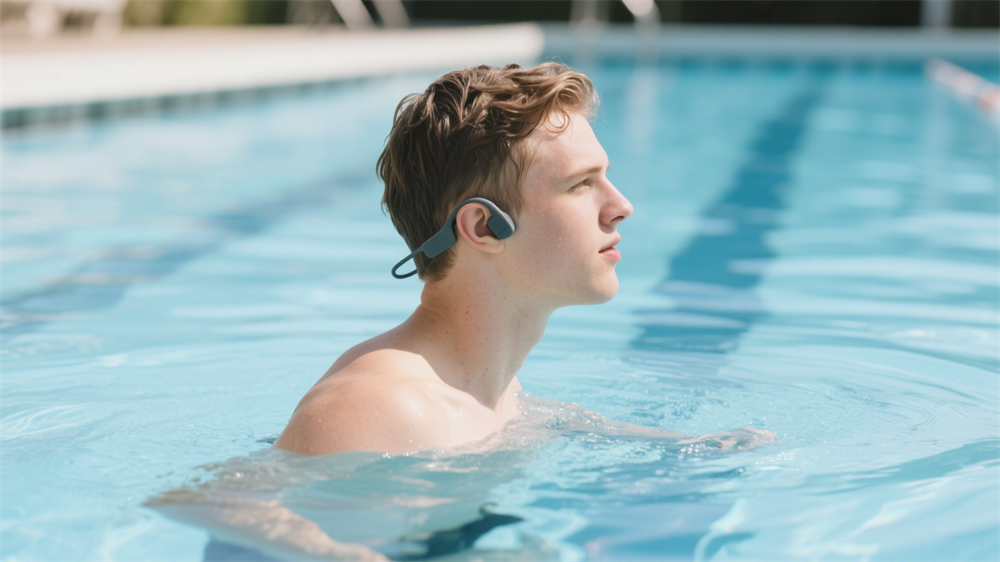Bone conduction headphones have surged in popularity, especially among athletes, outdoor enthusiasts, and individuals with certain hearing impairments. Unlike traditional headphones that send sound through the ear canal, these innovative devices transmit audio via vibrations through the skull, leaving the ears open to ambient sounds. This unique technology has sparked curiosity and debate about their safety: Are bone conduction headphones safe for long-term use? Do they protect your hearing better than conventional headphones?
Let's take it into discovery.

How Bone Conduction Headphones Work
Bone conduction headphones operate on a fascinating principle rooted in audiology. Instead of sending sound waves through the air to vibrate the eardrum, they use transducers placed on the cheekbones or near the ears to create vibrations. These vibrations travel through the skull directly to the cochlea, the auditory organ in the inner ear, which converts them into sound signals for the brain. This bypasses the outer and middle ear, making it an effective solution for individuals with conductive hearing loss or those who need to stay aware of their surroundings, such as runners or cyclists.
In contrast, traditional air conduction headphones rely on sound waves traveling through the ear canal to the eardrum, which then vibrates the tiny bones (ossicles) in the middle ear to reach the cochlea. The open-ear design of bone conduction headphones is a key differentiator, offering unique safety and comfort benefits but also raising questions about their impact on hearing and overall health.
Safety Concerns and Benefits
The safety of bone conduction headphones can be evaluated across three main areas: hearing health, physical safety, and general health considerations.
Hearing Health
A common myth is that bone conduction headphones are inherently safer for hearing because they bypass the eardrum. However, research indicates that this is not entirely true. According to a 2012 article in The Hearing Journal, both bone-conducted and air-conducted sounds stimulate the cochlea similarly, meaning excessive volume can still damage the cochlea’s delicate hair cells, leading to noise-induced hearing loss. The National Institutes of Health (NIH) supports this, noting that hearing loss from loud noises results from damage to the cochlea’s hair cells and auditory nerve, not the eardrum.
Bone conduction headphones are “no less safe than any headphone that goes in or over your ear,” but caution that volume is the critical factor. When the headphones vibrate noticeably, it’s a sign the volume is too high, which can be both uncomfortable and harmful. Thus, while bone conduction headphones avoid eardrum-related issues, they don’t eliminate the risk of hearing damage if misused.
Physical Safety
One of the standout safety benefits of bone conduction headphones is their open-ear design, which allows users to hear ambient sounds like traffic, sirens, or conversations. This makes them ideal for activities like jogging, cycling, or working in busy environments. England Athletics, for instance, permits only open-ear bone conduction headphones in road races due to their safety advantages.
However, physical safety concerns arise with prolonged use or improper fit. Some users report discomfort or pain where the transducers rest against the skull, particularly if the headphones are too tight or worn for extended periods. Ensuring a proper fit and taking breaks can mitigate these risks.
Best Practices for Safe Use
To ensure safe and comfortable use of bone conduction headphones, follow these best practices:
Control Volume Levels: Keep volumes at 50-60% of maximum to protect your hearing. If you feel vibrations, the volume is too high.
Take Regular Breaks: Avoid continuous use for extended periods to prevent discomfort or pressure on the head and neck.
Ensure Proper Fit: Adjust the headphones to sit comfortably on your cheekbones without excessive pressure to minimize irritation or headaches.
Use in Appropriate Environments: Leverage their situational awareness benefits in busy or outdoor settings, but consider traditional headphones for high-fidelity music listening.
Consider Alternatives: Open-ear air conduction headphones may offer similar awareness benefits with potentially less vibration discomfort.
FAQs
Can bone conduction headphones cause hearing loss?
They can cause hearing loss if used at excessively high volumes for prolonged periods, as they stimulate the cochlea similarly to traditional headphones. Keeping volumes moderate (50-60%) is crucial.
Are they better for people with hearing impairments?
Yes, they are particularly beneficial for individuals with conductive hearing loss, as they bypass the outer and middle ear. However, they may not help with sensorineural hearing loss.
How do they compare to open-ear air conduction headphones?
Both offer situational awareness, but bone conduction headphones transmit sound via skull vibrations, which may cause discomfort for some. Air conduction models may provide better sound quality with less vibration.
Are bone conduction headphones waterproof?
Many models, like the VCOM DE506 have an IP67 rating, making them water-resistant for sweat or rain but not suitable for swimming unless specified.
Can they cause headaches or discomfort?
Yes, prolonged use or improper fit can lead to headaches or skin irritation, particularly for sensitive users. Taking breaks and ensuring a proper fit can help.
Tag:Bone Conduction,Headphones




